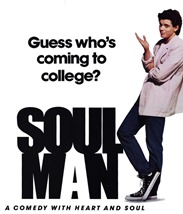Lost amid the news of salacious allegations of workplace misconduct, historically bad depositions, a food empire going down in flames, and the meaning of the N-word in 2103 American society is the fact that the employee suing Paula Deen and accusing her of racial harassment is White.
The fact a White employee is complaining about harassment against African-Americans, in and of itself, does not bar the plaintiff’s harassment claim. As the 6th Circuit held in Barrett v. Whirlpool Corp., a White employee can bring a lawsuit asserting racial harassment against an African-American co-worker, but only if the employee claiming the harassment was also discriminated against because of his or her race. In other words, it’s not enough for the plaintiff in the Paula Deen case to show that Ms. Deen created a racially hostile work environment in her restaurant. She must also prove that Ms. Deen discriminated against her because of her race (White).
Last week, Ms. Deen’s lawyers supplemented an earlier-filed motion seeking the dismissal of, among other claims, the racial harassment claim. They claim that the plaintiff cannot seek the protections of Title VII because she is not claiming that she was discriminated against, but merely that a racially hostile work environment existed targeting other races.
In support of this argument, Ms. Deen cites to Hollingsworth v. Perry, the recent U.S. Supreme Court case that dismissed, on the basis of a lack of standing, the challenge to the illegality of California’s gay marriage ban. Ms. Deen claims that per Hollingsworth, the plaintiff lacks standing to claim racial harassment. Per Hollingsworth:
Article III of the Constitution confines the judicial power of federal courts to deciding actual “Cases” or “Controversies.” One essential aspect of this requirement is that any person invoking the power of a federal court must demonstrate standing to do so. This requires the litigant to prove that he has suffered a concrete and particularized injury that is fairly traceable to the challenged conduct, and is likely to be redressed by a favorable judicial decision…. In other words, for a federal court to have authority under the Constitution to settle a dispute, the party before it must seek a remedy for a personal and tangible harm. “The presence of a disagreement, however sharp and acrimonious it may be, is insufficient by itself to meet Art. III’s requirements.”
In other words, Paula Deen argues that a White employee lacks standing to claim racial harassment against her African-American co-workers because she is not seeking a remedy for a harm personally against her.
Regardless of how the court decides this issue, employers should not use the standing issue as carte blanche to ignore certain harassment complaints. When an employer handles a harassment complaint, the race, gender, religion, national origin, etc. of the employee complaining should not matter. An employer should still investigate and take prompt and appropriate remedial measures to ensure that any harassment that occurred ceases.
The Constitutional argument raised by Paula Deen’s legal team is a nice weapon to have once you are in the thick of litigation, but following my practical tip will help keep you out of litigation in the first place.
Hat tip: Deadline


 According to the
According to the  Four months ago, the EEOC issued its
Four months ago, the EEOC issued its